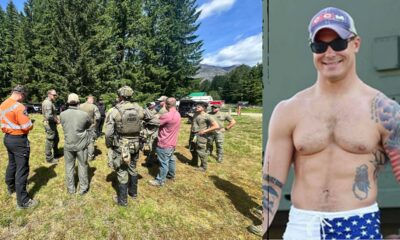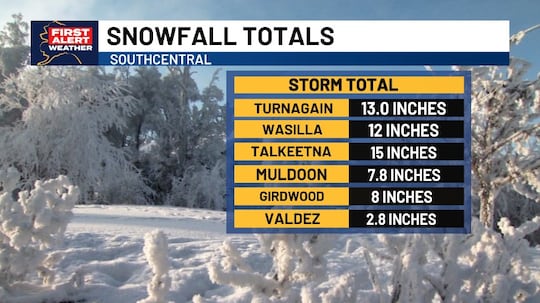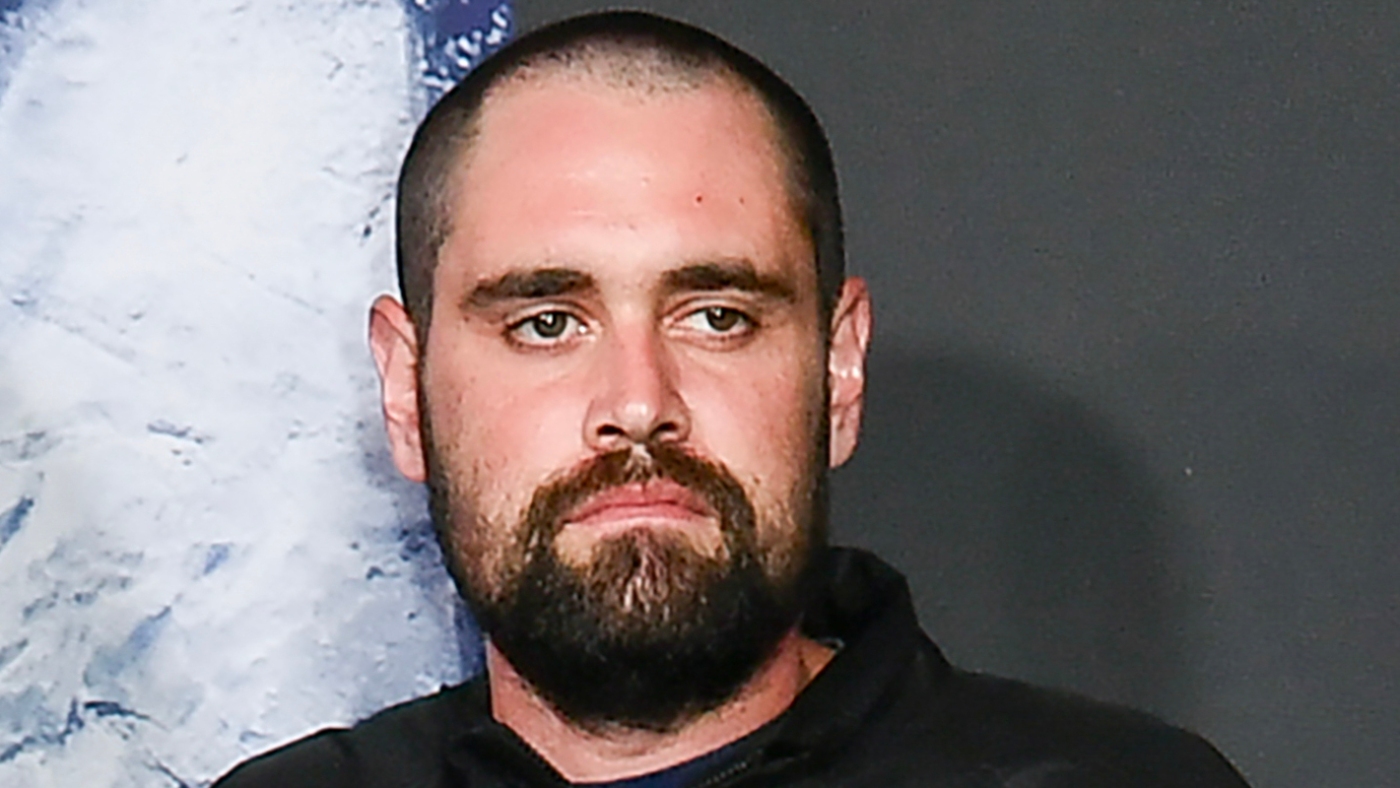Alaska
What’s happening to Alaska’s glaciers and how it could impact your trip

Alaskan glacial lake outburst prompts evacuations, floods communities
A glacial lake outburst flooded communities in the capital of Alaska with 16 feet of water.
Climate change is drastically impacting the world around us, including the way people travel and the destinations themselves. “Green Travel” is a seven-part series delving into how climate change is transforming the landscape of travel. If you’d like to contribute to our future reporting and share your experience as a source, you can click here to fill out this quick form.
When travelers visit Alaska, they often want to see glaciers.
And it’s the perfect place for those.
The Last Frontier is home to the most glaciers in the U.S. There are roughly 27,000 glaciers across the state, covering an area of about 80,000 square kilometers, according to Louis Sass, an Anchorage-based glaciologist with the Alaska Science Center U.S. Geological Survey.
“That’s about the same amount of area as the state of South Carolina or Lake Superior,” he said.
That’s huge, yet not as big as it used to be.
“Globally, most glaciers are melting and thinning and retreating much faster now than they were, say, prior to about the year 2000,” Sass said.
Here’s what that means for travelers hoping to see glaciers in Alaska and elsewhere.
What causes melting of glaciers?
It’s natural for glaciers to melt.
“You can really just think of a glacier as a huge conveyor belt that takes snow and ice from up high, where it can’t melt, down to low elevations where it’s a lot warmer and it does melt.”
It’s the rate of melting and thinning that’s shifted dramatically.
Research published in July in the peer-reviewed British journal Nature Communications, found the rates of glacier area shrinkage in Alaska’s Juneau icefield were five times faster from 2015 to 2019 than from 1948 to 1979.
A National Park Service report on Alaska’s glaciers noted glaciers within Alaska national parks shrank 8% between the 1950s and early 2000s and glacier-covered area across the state decreased by 13% between 1985 and 2020.
“These systems are under threat,” said Brice Esplin, Director of Sustainable Tourism and Partnerships at Leave No Trace. “Climate change is affecting them.”
While Sass did not identify climate change by name, noting he’s not a climate scientist, he said glaciers are very sensitive to inputs like temperature and precipitation.
“Temperature has kind of a double whammy, because air temperature can change the phase of the precipitation, so more of the precipitation that falls out of the sky can actually be rain instead of snow. And rain tends to run off the glacier and not add to the glacier mass,” he said.
The U.S. Department of Agriculture’s Northwest Climate Hub notes Alaska is “warming at two to three times the rate of the global average.”
National parks ask us to Leave No Trace: Here’s what that actually means
What is happening to the glaciers in Alaska?
“Some glaciers are advancing, but the vast majority of them are shrinking, and at Kenai Fjords (National Park), you can just see that right up close and personal,” Peter Christian, chief spokesperson for Public Affairs for the National Park Service’s Alaska region, said last year during USA TODAY’s more than yearlong national park series.
An area of the park where that’s especially pronounced is Exit Glacier.
“It literally is changing yearly. If you went back from one year to the next, you could see how far the glacier has continued to retreat up into the mountains,” he said, noting that the Park Service has signs set up along the trail to the glacier, marking the changes.
Matanuska Glacier, about 100 miles from Anchorage, is another example.
“It’s only retreated a little bit. It’s actually very close to where it was even 120 years ago, but it has thinned a lot, and it’s actually really easy to see that thinning,” Sass said. “The ice is just sort of deflated as it loses mass and it melts.”
Matanuska Glacier is the state’s largest glacier accessible by road, according to Alaska’s official travel arm, Travel Alaska, but Sass said it used to be even easier to reach.
“There’s all these sort of little melt puddles right along the edge of the glacier that are getting bigger and bigger and harder to cross, and there’s more and more mud to try to get out to the ice,” he said. “It used to be, on Matanuska Glacier, you basically walked from the parking lot onto clean, white ice.”
He added that many tidewater glaciers have also been impacted.
“So even big cruise ships that are trying to take passengers up to see calving glaciers, they have to go further up the inlet to actually be able to see a calving glacier,” he said. “Places that used to have a really good view of a glacier sometimes don’t have a good view anymore, and so it gets generally more and more challenging to get to those places where you can kind of experience the same level of glacier.”
Where can you see a glacier?
From Wrangell-St. Elias National Park and Preserve, home of the most glaciers of any national park, to Mendenhall Glacier, which is protected by the U.S. Forest Service, there are so many places to see glaciers in Alaska.
They can also be found in Glacier National Park in Montana, Grand Teton National Park in Wyoming, Mount Rainier National Park in Washington, and elsewhere around the West and the world.
“It’s important for people to see these amazing natural systems, because they create that appreciation, that love and that connection of nature and for the in the future,” Esplin said.
He encourages travelers to experience glaciers close to home, when possible.
“We have one glacier in my state in Great Basin National Park, and it’s shrinking rapidly. It probably won’t last the next 20 years,” he said. “Right now, that’s a short drive for me to go see a glacier, appreciate it before it’s gone.”
But he also understands the desire to behold glaciers far away, having recently visited Alaska himself and seen a handful of glaciers over several weeks.
“We want to think about really making sure that we’re choosing sustainable methods to visit these these areas,” he said. “If we did have to use airline fuel and burn that carbon to get up there, at least we’re staying for longer.”
What to know before visiting a glacier
“There have to be hundreds, if not thousands of opportunities up here in Alaska to see glaciers,” Sass said, encouraging people to “go see a glacier in a way that makes sense for them.”
That may be appreciating them from afar by land, air or sea or getting up close with a guided tour.
“We don’t expect people to hover above the ground and never interact with the natural world around us,” Esplin said. “It’s all a balancing act, a balancing act of humans being a part of nature, but also not destroying it entirely.”
For travelers who want to get up close, Esplin shared these Leave No Trace-based tips:
- Plan ahead and prepare: “Usually that includes booking a guide service. It’s never recommended for anyone without sufficient training or expertise to go out on glaciers, as they’re constantly moving. They have crevasses, snow bridges and moulins. They’re usually (in) pretty remote environments as well, so that that safety aspect is one of the most important parts of interacting with glaciers.”
- Be mindful of where you tread. “We can affect the vegetation on the sides and really promote erosion in areas if we’re not utilizing trails or durable surfaces to get on and off that glacier.
- Pack out all waste, including food waste and human waste “so that it’s not being left behind to pollute that water source, that special place.”
- Remember wildlife. “They use (glaciers) to travel in between places… Even though you feel like you might be on an isolated world, wildlife can still be out there.”
Contributing: Doyle Rice, USA TODAY

Alaska
National Native helpline for domestic violence and sexual assault to open Alaska-specific service
Alaska
Dozens of vehicle accidents reported, Anchorage after-school activities canceled, as snowfall buries Southcentral Alaska

ANCHORAGE, Alaska (KTUU) – Up to a foot of snow has fallen in areas across Southcentral as of Tuesday, with more expected into Wednesday morning.
All sports and after-school activities — except high school basketball and hockey activities — were canceled Tuesday for the Anchorage School District. The decision was made to allow crews to clear school parking lots and manage traffic for snow removal, district officials said.
“These efforts are critical to ensuring schools can safely remain open [Wednesday],” ASD said in a statement.
The Anchorage Police Department’s accident count for the past two days shows there have been 55 car accidents since Monday, as of 9:45 a.m. Tuesday. In addition, there have been 86 vehicles in distress reported by the department.
The snowfall — which has brought up to 13 inches along areas of Turnagain Arm and 12 inches in Wasilla — is expected to continue Tuesday, according to latest forecast models. Numerous winter weather alerts are in effect, and inland areas of Southcentral could see winds up to 25 mph, with coastal areas potentially seeing winds over 45 mph.
Some areas of Southcentral could see more than 20 inches of snowfall by Wednesday, with the Anchorage and Eagle River Hillsides, as well as the foothills of the Talkeetna Mountain, among the areas seeing the most snowfall.
See a spelling or grammar error? Report it to web@ktuu.com
Copyright 2026 KTUU. All rights reserved.
Alaska
Yundt Served: Formal Charges Submitted to Alaska Republican Party, Asks for Party Sanction and Censure of Senator Rob Yundt

On January 3, 2026, Districts 27 and 28 of the Alaska Republican Party received formal charges against Senator Rob Yundt pursuant to Article VII of the Alaska Republican Party Rules.
According to the Alaska Republican Party Rules: “Any candidate or elected official may be sanctioned or censured for any of the following
reasons:
(a) Failure to follow the Party Platform.
(b) Engagement in any activities prohibited by or contrary to these rules or RNC Rules.
(c) Failure to carry out or perform the duties of their office.
(d) Engaging in prohibited discrimination.
(e) Forming a majority caucus in which non-Republicans are at least 1/3 or more of the
coalition.
(f) Engaging in other activities that may be reasonably assessed as bringing dishonor to
the ARP, such as commission of a serious crime.”
Party Rules require the signatures of at least 3 registered Republican constituents for official charges to be filed. The formal charges were signed by registered Republican voters and District N constitutions Jerad McClure, Thomas W. Oels, Janice M. Norman, and Manda Gershon.
Yundt is charged with “failure to adhere and uphold the Alaska Republican Party Platform” and “engaging in conduct contrary to the principles and priorities of the Alaska Republican Party Rules.” The constituents request: “Senator Rob Yundt be provided proper notice of the charges and a full and fair opportunity to respond; and that, upon a finding by the required two-thirds (2/3) vote of the District Committees that the charges are valid, the Committees impose the maximum sanctions authorized under Article VII.”
If the Party finds Yundt guilty of the charges, Yundt may be disciplined with formal censure by the Alaska Republican Party, declaration of ineligibility for Party endorsement, withdrawal of political support, prohibition from participating in certain Party activities, and official and public declaration that Yundt’s conduct and voting record contradict the Party’s values and priorities.
Reasons for the charges are based on Yundt’s active support of House Bill 57, Senate Bill 113, and Senate Bill 92. Constituents who filed the charges argue that HB 57 opposes the Alaska Republican Party Platform by “expanding government surveillance and dramatically increasing education spending;” that SB 113 opposes the Party’s Platform by “impos[ing] new tax burdens on Alaskan consumers and small businesses;” and that SB 92 opposes the Party by “proposing a targeted 9.2% tax on major private-sector energy producer supplying natural gas to Southcentral Alaska.” Although the filed charges state that SB 92 proposes a 9.2% tax, the bill actually proposes a 9.4% tax on income from oil and gas production and transportation.
Many Alaskan conservatives have expressed frustration with Senator Yundt’s legislative decisions. Some, like Marcy Sowers, consider Yundt more like “a tax-loving social justice warrior” than a conservative.
Related
-

 News1 week ago
News1 week agoFor those who help the poor, 2025 goes down as a year of chaos
-

 Detroit, MI4 days ago
Detroit, MI4 days ago2 hospitalized after shooting on Lodge Freeway in Detroit
-
Georgia1 week ago
Best in Georgia: 2025 AJC Varsity high school football all-state teams
-

 Dallas, TX3 days ago
Dallas, TX3 days agoDefensive coordinator candidates who could improve Cowboys’ brutal secondary in 2026
-

 Detroit, MI1 week ago
Detroit, MI1 week agoWith 46k outages around Michigan, Metro Detroit prepares for power loss
-

 Southeast1 week ago
Southeast1 week agoMurder in small-town America: The crimes that tore quiet communities apart in 2025
-

 Miami, FL1 week ago
Miami, FL1 week agoMiami-Dade sheriff’s deputy opens fire on vehicle after altercation during traffic stop, officials say
-

 Midwest1 week ago
Midwest1 week agoMcDonald’s locks doors to keep out individuals who present ‘a risk’ in crime-ridden Minneapolis area
























